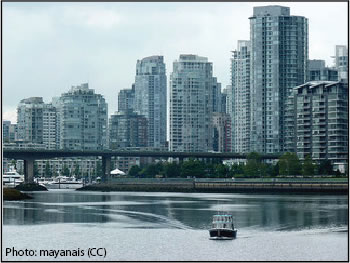Background Research
With the continued rural to urban migration across Canada, the implementation of urban agriculture has never been more important. As areas develop, land use changes from primary production in agriculture to residential, commerical, and industrial uses, causing the land cover area to change significantly in species composition and in structure (Hepinstall-Cymerman, Coe & Hutruya, 2011). In order to be sustainable and independent centers and in addition to providing basic human rights and a high standard of living, urban areas must now be aware of the food security of their citizens, as well as their ecological footprint. Planning can mitigate growth patterns, and changes in land use regulations can also be used to direct urbanization towards a more sustainable and environmentally friendly way (Hepinstall-Cymerman, Coe & Hutruya, 2011). Urban agriculture has been shown to support a number of sustainability goals such as environmental protection, public health and nutrition, poverty reduction, community capacity building, participatory decision making, social inclusion, and community economic development (Mendes, Blamer, Kaethler & Rhoads, 2008).
In addition to providing socio-economic benefits, a connection to green spaces and nature has been consistently associated with autonomy, personal growth, and purpose in life (Howell, Dopko, Passmore & Buro, 2011). Horticultural therapy is a process in which plants and gardening are used to improve people's bodies, minds, and spirits and can help to relieve stress and stress associated disorders (Adevi & Lieberg, 2012). Cultivating plants is more effective at reducing negative thought patterns than just looking at plants, and creates an emotional and existential awareness (Adevi & Lieberg, 2012). The therapeutic uses of urban agriculture could then be implemented in neighborhoods of Vancouver that have low socio-economic status or high levels of mental illness, such as Strathcona, in order to raise the well-being of residents in the area. Natural areas in cities are appreciated by citizens for environmental amenity, and psychological and health benefits, as well as foster a balanced human-nature relationship (Lo & Jim, 2012).
 In 2006, the City of Vancouver included community gardens as a "community amenity contribution" for the first time (Mendes, Blamer, Kaethler & Rhoads, 2008). The City of Vancouver has implemented a Food Strategy as of 2013 that focuses on five priorities: 1) Food production 2) Empowering Residents 3) Food Access 4) Food Processing and 5) Food Waste. When working with the Green City 2020 Action Plan, both of these policies will most likely result in a high density of urban agriculture within the boundaries of metro Vancouver. As previously mentioned, residents of Vancouver with low socio-economic status and education levels will more likely benefit from the implmentation of these policies and measures.
In 2006, the City of Vancouver included community gardens as a "community amenity contribution" for the first time (Mendes, Blamer, Kaethler & Rhoads, 2008). The City of Vancouver has implemented a Food Strategy as of 2013 that focuses on five priorities: 1) Food production 2) Empowering Residents 3) Food Access 4) Food Processing and 5) Food Waste. When working with the Green City 2020 Action Plan, both of these policies will most likely result in a high density of urban agriculture within the boundaries of metro Vancouver. As previously mentioned, residents of Vancouver with low socio-economic status and education levels will more likely benefit from the implmentation of these policies and measures.
